72-Hour Water Fast: My Experience, Insights, Surprising Results and What is Next

What happens when you stop eating for three days? That’s the question I set out to answer when I decided to embark on a 72-hour water fast. No food—just water, tea, and coffee.
This was a simple experiment. As a shift worker and airline pilot, my lifestyle isn’t exactly optimized for peak health. I often deal with irregular sleep, sedentary hours in the cockpit, and the challenge of maintaining good nutrition on the go. So, when I stumbled upon the concept of fasting, I was intrigued. Could this be a way to reset my body, improve my focus, and boost my well-being?
In this blog post, I’ll share:
✅ Why I did a 72-hour fast
✅ The science behind fasting and metabolism
✅ What I experienced during the 3 days
✅ The benefits I noticed
✅ What I would do differently next time - That is the most important.
Why Would Anyone Do a 72-Hour Fast?
At first, fasting for 72 hours might sound odd. But human bodies are built for fasting. In a world of hunters and gatherers, food wasn’t always available, and our metabolism evolved to adapt. The body naturally switches between fasting and feasting depending on food availability.
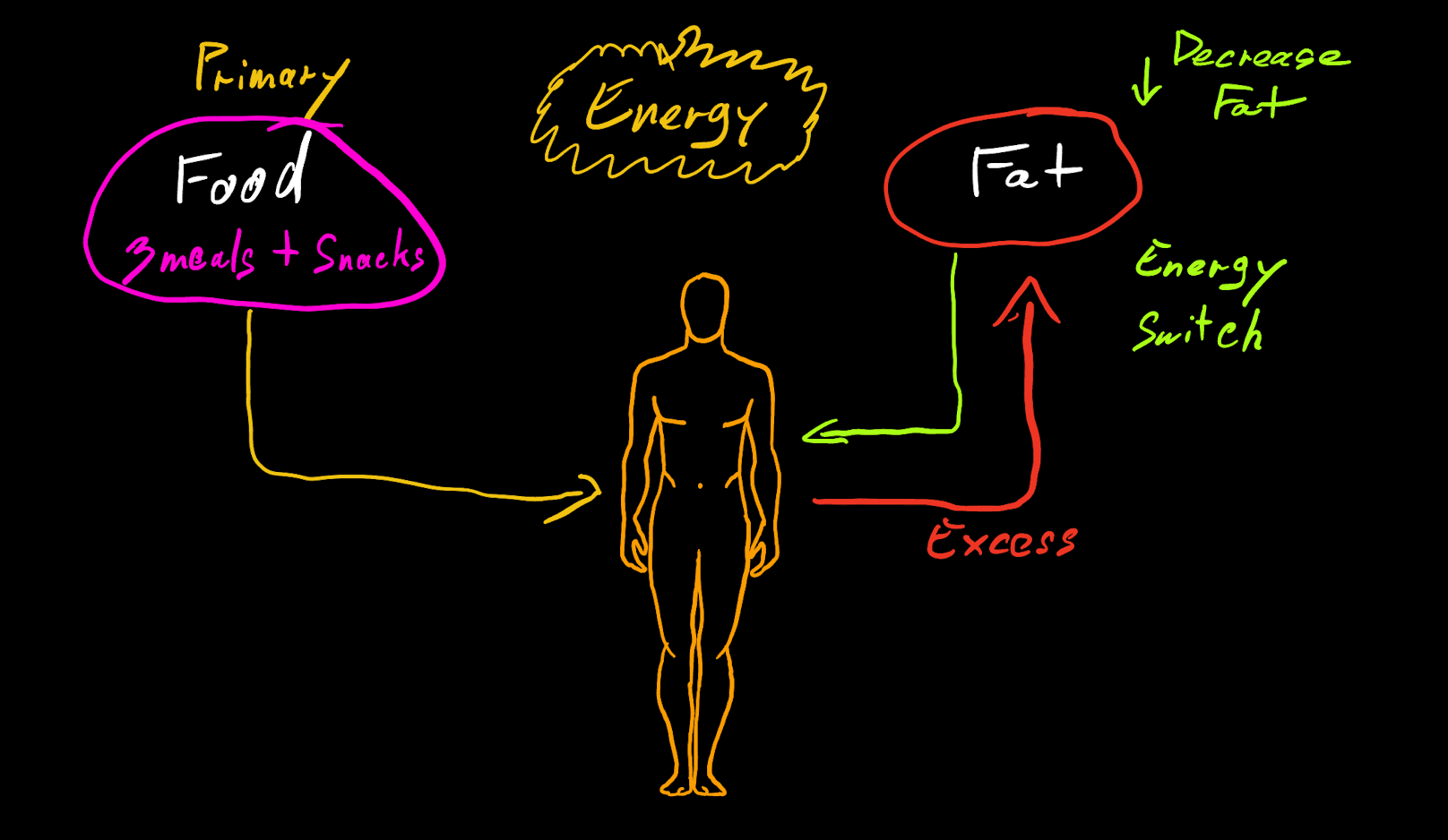
When we eat regularly, our body relies on glucose from food for energy. But when we stop eating, our metabolism shifts—burning stored fat for fuel instead. This is where fasting becomes interesting.
The Science Behind Fasting
When fasting, the body goes through several stages:
1️⃣ First 12-16 hours – The body burns through stored sugar (glycogen) for energy.
2️⃣ 24+ hours – Insulin levels drop, and the body starts producing ketones, shifting into fat-burning mode.
3️⃣ 48+ hours – Autophagy begins, a process where the body breaks down and recycles old or damaged cells.
4️⃣ 72 hours – The body enters deeper metabolic changes, improving cellular repair, reducing inflammation, and increasing growth hormone production.
Many people fast for longevity, cognitive benefits, and metabolic health—it is not weight loss diet! But it may happen as a consequence.
My 72-Hour Fasting Experience
Day 1 – A Rough Start
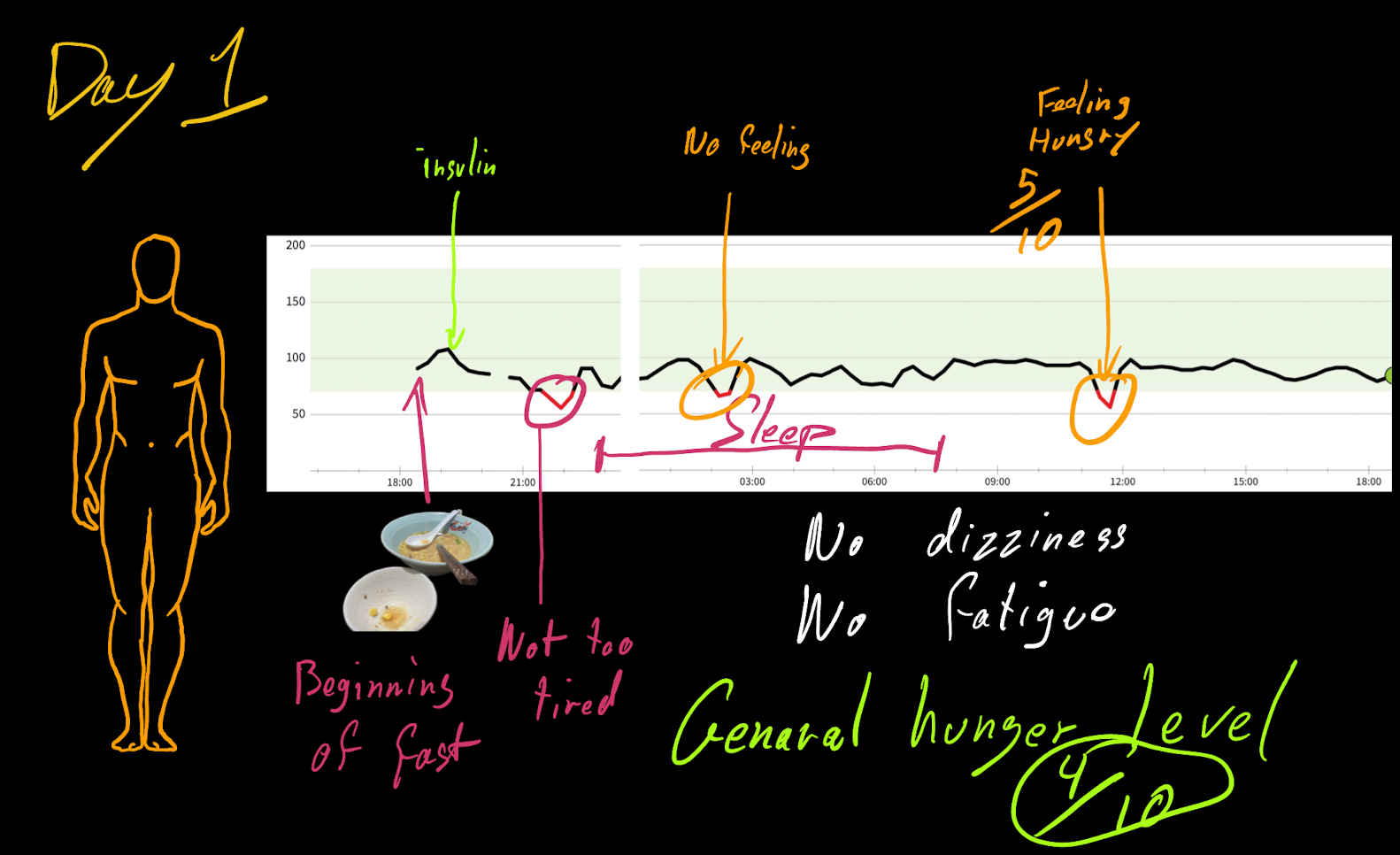
I didn’t plan this fast properly. In fact, I made a classic mistake: I started right after a carb-heavy meal at a ramen restaurant.
This led to a noticeable glucose spike, followed by an insulin crash. The first few hours felt normal, but by nighttime, my body was already on a glucose rollercoaster—swinging between highs and lows.
I had a continuous glucose monitor (CGM) on my arm to track my blood sugar in real-time. I noticed a sharp glucose drop overnight, but interestingly, I didn’t feel any hunger in the morning.
➡️ Hunger Level: 5/10 (manageable)
➡️ Energy Levels: Normal
➡️ Focus: Unaffected
Day 2 – Mental Clarity and Focus
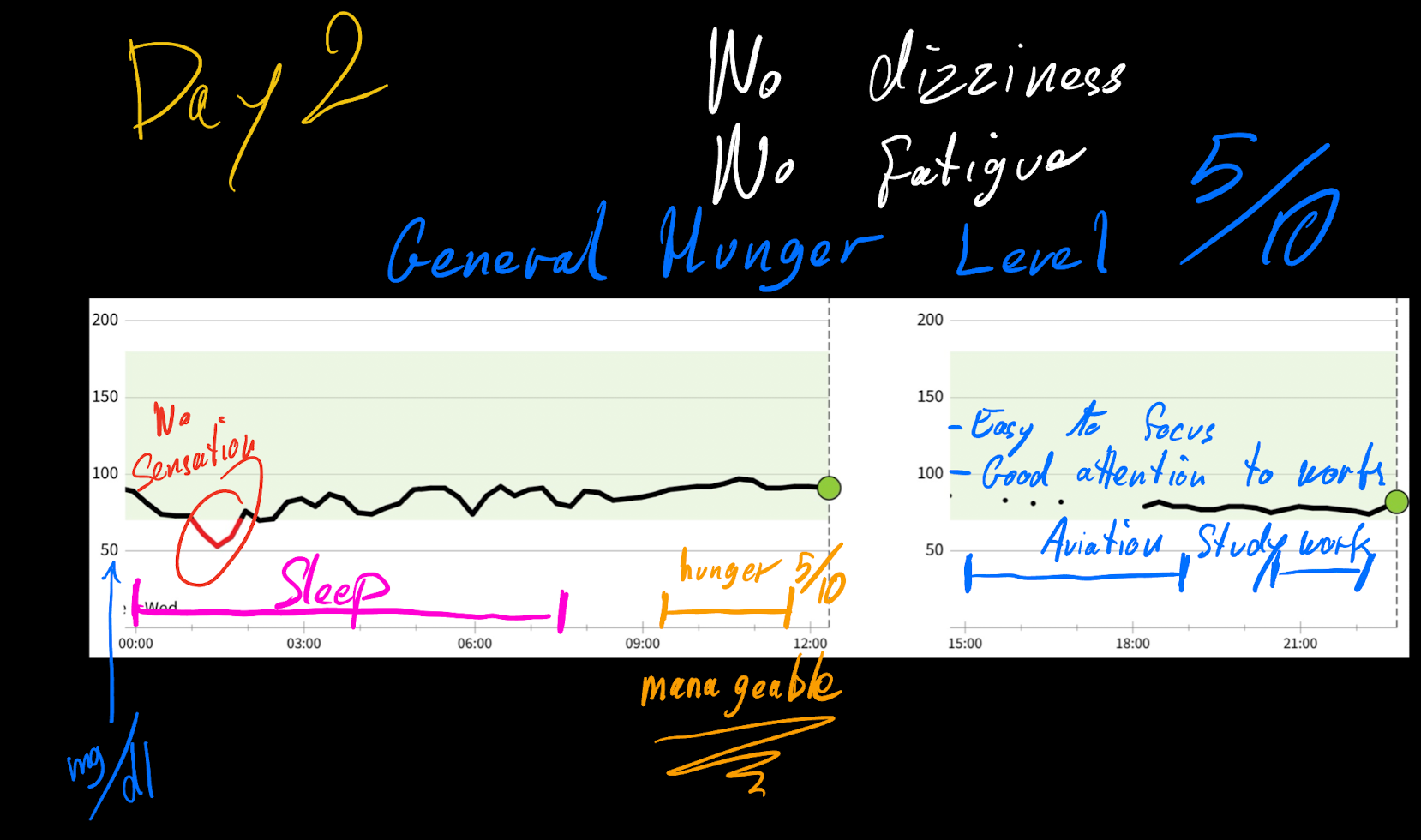
I woke up feeling surprisingly good. No major hunger pangs, just a slight empty feeling in my stomach.
During the day, I had zero dizziness or fatigue, which was unexpected. My focus was sharp—I had a few hours of studying to do, and I was able to concentrate with ease.
By now, my body had fully switched to fat-burning mode, and the hunger hormone (Ghrelin) wasn’t bothering me.
➡️ Hunger Level: 4-5/10 (stable)
➡️ Energy Levels: Slightly lower but still good
➡️ Mental Clarity: Incredible!
Day 3 – Motivation Kicks In
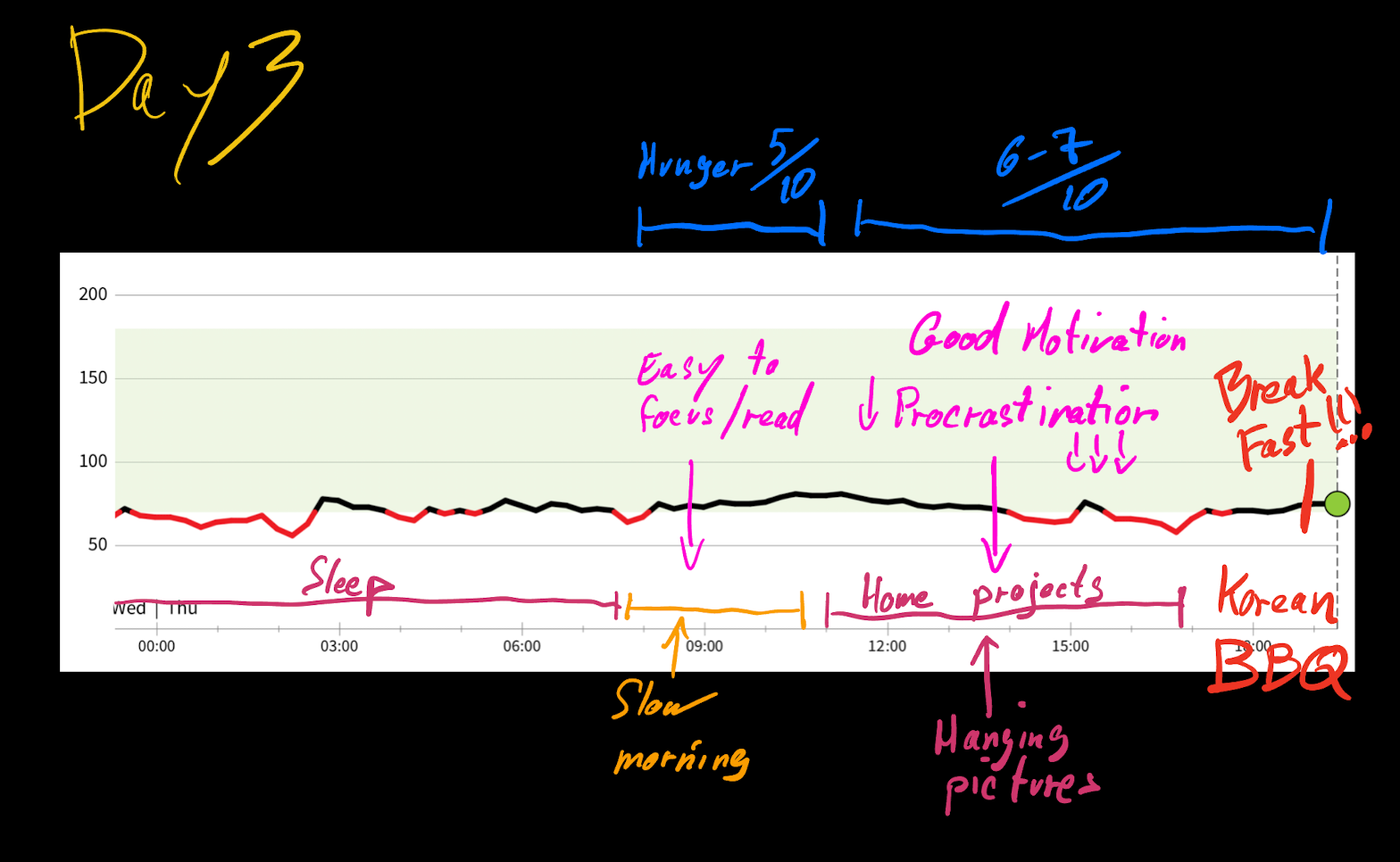
By the third day, my body had fully adapted to fasting. My glucose levels were incredibly stable, and I wasn’t feeling any major cravings.
What surprised me the most was my motivation. In the afternoon, I tackled a home project I had been procrastinating on for months—hanging pictures on the wall. Even though I wasn’t feeling super energetic, my mental drive was high.
➡️ Hunger Level: 5-6/10
➡️ Energy Levels: Moderate but steady
➡️ Productivity: Surprisingly high
At 73 hours, I decided to break my fast at a Korean BBQ restaurant. Again, not the best choice, but I was craving protein and fat. Next time, I’d refeed more carefully to avoid shocking my digestive system.
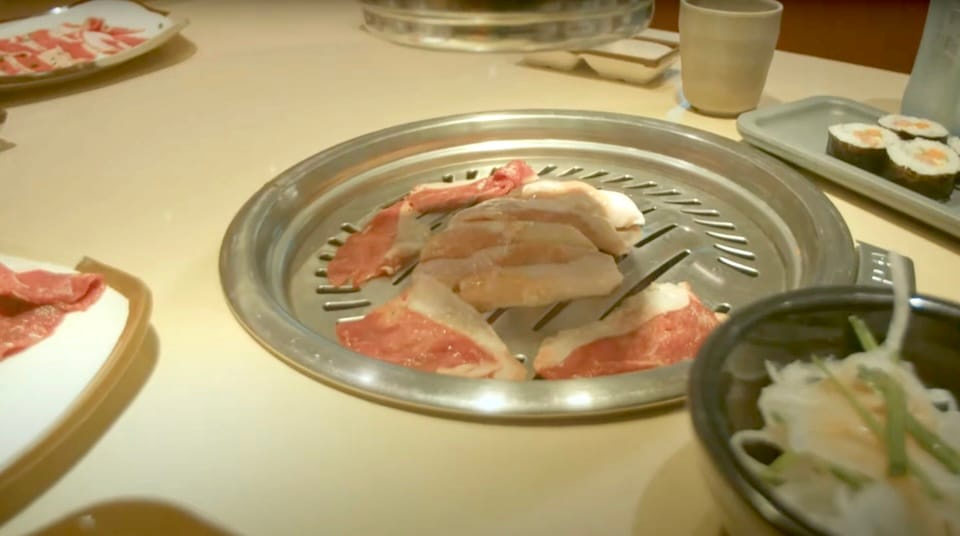
What I Learned from This 72-Hour Fast
✅ Fasting is easier than I expected – The hardest part was the first day, but after that, hunger disappeared.
✅ Mental clarity was a huge benefit – I felt sharp and focused, especially on Days 2 and 3.
✅ I didn’t feel weak or tired – No dizziness, no crashes, no fatigue.
✅ Glucose monitoring showed interesting trends – My body adapted quickly, and my blood sugar became more stable.
✅ Next time, I’ll prepare better – I’ll reduce carbs before fasting to enter ketosis faster.
Would I Do It Again?
Absolutely. But with better preparation. Next time, I’d:
✔️ Reduce carbs 2-3 days before fasting.
✔️ Start fasting earlier in the day to stabilize glucose.
✔️ Break my fast with lighter, more digestible foods.
If you’re considering fasting, consult a doctor first—especially if you have any medical conditions. But if you’re healthy and curious, it’s an interesting self-experiment that can reveal a lot about your body and metabolism.
Final Thoughts
Fasting isn’t just about weight loss—it’s about metabolic flexibility, longevity, and self-discipline. It’s a powerful tool, but like anything, it requires understanding and preparation.
I’ll definitely do another extended fast in the future—maybe even push to 5 days.